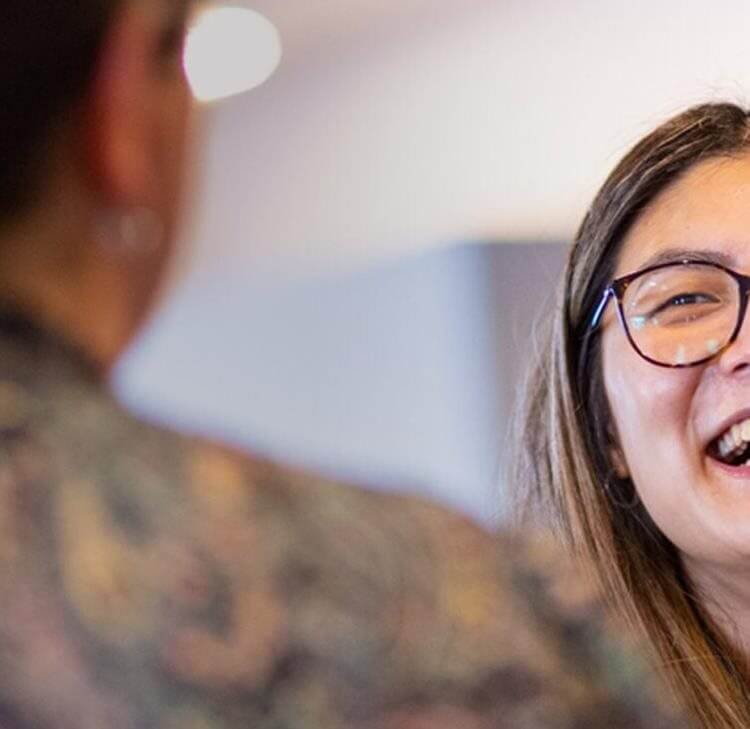Women in knowledge exchange and spinouts
This article was first published on 13 October 2021 by PraxisAuril in their 2021 Conference Proceedings.
Women may have broken down many professional and personal barriers, but significant gender disparity remains in the research and development community. Female entrepreneurs account for just one in five university spinout founders, and only 12% of new spinouts have at least one female director at the helm.
The diversity of knowledge exchange professionals was discussed during an insightful session held on 10 June at the PraxisAuril Conference 2021, and speakers including Anji Millar and Megan Aanstoos shared thought-provoking views on the current diversity landscape within knowledge exchange. It was really interesting to hear while many of the organisations that the audience worked for had equality, diversity and inclusion leads with a specific focus on this agenda, the majority of the audience still thought there was room for improvement.
It is clear that there is a long way to go, and each knowledge exchange professional has a part to play in educating themselves and others to work towards a more diverse and inclusive environment.
Encouraging more female led spinouts
Focussing specifically on female involvement, our experience has shown that historically many women developing innovative concepts in universities are often less likely to commercialise any intellectual property (IP) assets they create, and instead have previously continued their work through tried and tested applications for grant funding. However, we are witnessing more female led spinouts being established and far more women in universities looking to commercial their IP assets in recent years, and we hope that this trend continues so that female representation increases.
It is also interesting that almost all spinout companies are exclusively in Science, Technology, Engineering, Maths and Medicine (STEMM) areas, which have historically attracted fewer women than men. The Equality Challenge Unit has previously reported that only 18.5% of all professors and only 25.5% of academic senior managers in STEMM disciplines are women. Although, 43.4% of postgraduate researchers in STEMM are women, which poses the question as to why more women are not becoming entrepreneurs of new spinout companies.
As a follow on from the Conference session, we recently hosted a webinar which discussed the key issues that women entrepreneurs face in spinouts including:
- the barriers faced by women entrepreneurs entering the market and commercialising their intellectual property and know-how;
- the challenges faced by female entrepreneurs in seeking external funding and funding initiatives in place to specifically support women;
- why so few women are involved in university spinout companies; and
- what can be done to improve female involvement in the spinout and investment community.
The guests who discussed these issues included, Kate Walker (Founder of ExpHand), Frankie Snobel (Founder of Tipplesworth), Megan Bingham-Walker (Co-Founder & CEO of Anasai), Sandy Reid (Investment Director, Mercia) and Bethany Watrous (Director Experience Heritage).
Commercialisation of intellectual property in spinouts
Most universities have become actively involved in forming spinout companies as a method of commercialising IP. Implementing a clear pathway to commercialise IP is also more attractive to researchers and academics working within the university. A spinout company will usually acquire some IP from the university, or it will have licensing arrangements in place to enable the spinout company to use and develop the IP.
To maximise the commercialisation of IP in spinouts, any available grant funding for research and development of IP should be considered and innovative collaborations with third party organisations can be another way to bring IP to market quickly. Collaboration and research and development agreements can govern the relationship with any third party’s which may be involved in funding the research. The most notable issues which often arise are:
- Who will own the IP rights which are being developed, or currently used during the development?
- Will there be any licenses of IP rights, and what type of license will this be?
- How will the spinout company be paid for its research and development?
- What will the royalty structure look like when the IP is commercialised?
These are all important questions which should be fully explored between the parties and reflected in any collaboration or research and development agreement.
Corporate and governance considerations for a spinout
Spinouts raise over £1bn a year with the most recent trends being in the pharmaceutical and artificial intelligence sectors. However, recent data suggests that 41% of spinouts cease activity between five and 10 years after formation and the average age at ‘death’ of a spinout is 7.4 years. This can be for a wide variety of reasons; both successful and not so successful.
At the start of the spinout journey there are justifiable high expectations and hopes for all stakeholders. Maintaining this through the process of spinning out and growth is not straightforward; it requires compromise on all sides and a deep understanding of both how to stay aligned at inception and with a view to an exit.
The mechanics of commercialisation can be straightforward - assign or licence intellectual property or know-how to a newly incorporated company, agree the board composition and shareholding structure as well as controls to allow the new board to grow the business, transfer/second/employ staff and exit.
The legal structure of a spinout is vital to its success because it is the incentivisation structure which drives commercialisation.
There are excellent opportunities for boards to include academics representing the HEI to further the connection between HEIs and industry as well as, of course, generating a return on investment in research and development for the HEI. A structured forward-looking approach to the issues can only help increase the success of both spinning out technology and keeping it spinning.
You may be interested in...
Legal Update
How shared technology transfer offices can help universities commercialise research
Legal Update
Data (Use and Access) Act 2025: Unlocking research potential for universities
Legal Update - Be Connected (higher education)
Be Connected, higher education: Spring 2025
Legal Update
Subsidy control: Guide to streamlined routes for universities
Legal Update
Knowledge exchange and intellectual property
Press Release
Browne Jacobson’s intellectual property lawyers ranked experts in World Trademark Review guide 2023
Press Release
Law firm picks up record breaking sixth Education Investor Award
Browne Jacobson’s education team has been named as winner of the ‘Legal Advisors to Education Institutions’ category at the Education Investor Awards 2022 for a record sixth time.
Press Release
Thousands take part in virtual careers event to help increase diversity in the legal profession
Over 3000 young people from across the UK and Ireland took part in a virtual legal careers insight event, aimed at making the legal profession more diverse.
Press Release
Browne Jacobson and The University of Nottingham announce Knowledge Transfer Partnership to promote greater equality, diversity and inclusion in the legal sector and beyond
Legal Update
be connected newsletter for higher education - May 2022
In this edition we provide you with the latest in legal updates, news and insight from the higher education sector.
Legal Update
Creating a profitable future for your university intellectual property
Press Release
Browne Jacobson’s C-suite exec level coaching team appoints two new education specialists
National law firm Browne Jacobson has grown its team behind its dedicated Space + Time executive coaching programme with the addition of two more qualified coaches who will work with clients in the education sector.
Legal Update
be connected newsletter for higher education - February 2022
In this edition we provide you with the latest in legal updates, news and insight from the higher education sector.
Legal Update
be connected newsletter for higher education - November 2021
In this edition we provide you with the latest in legal updates, news and insight from the higher education sector.
Press Release
Browne Jacobson hosts UK’s largest virtual legal careers event to boost access to careers in law
Published Article
Women in knowledge exchange and spinouts
On-Demand
Diversity in spinouts, start-ups and early stage funding
On-Demand
University spinouts and joint ventures – developing your in-house expertise
Legal Update
be connected newsletter for higher education - April 2021
In this edition of our higher education newsletter, we provide you with the latest in legal updates, news and insight from the higher education sector.
Legal Update
Risk management in digital transformation for universities
Legal Update
be connected newsletter for higher education - January 2021
In this edition we provide you with the latest in legal updates, news and insight from the higher education sector.
Legal Update
Could your new Covid-19 related intellectual property (IP) be commandeered by the Crown?
Universities across the nation have been working valiantly to produce a vaccine for SARS-CoV-2, otherwise known as Covid-19, in addition to working tirelessly on new testing options. It is easy in these times to forget that universities may still own valuable intellectual property (IP) created in these efforts.
On-Demand
How to commercialise your IP: licensing, spin outs and JVs
Our expert panel, comprised of IP and corporate law specialists, will be discussing IP commercialisation strategies, their benefits and pitfalls, drawing on experience across the private, public and higher education sectors.









